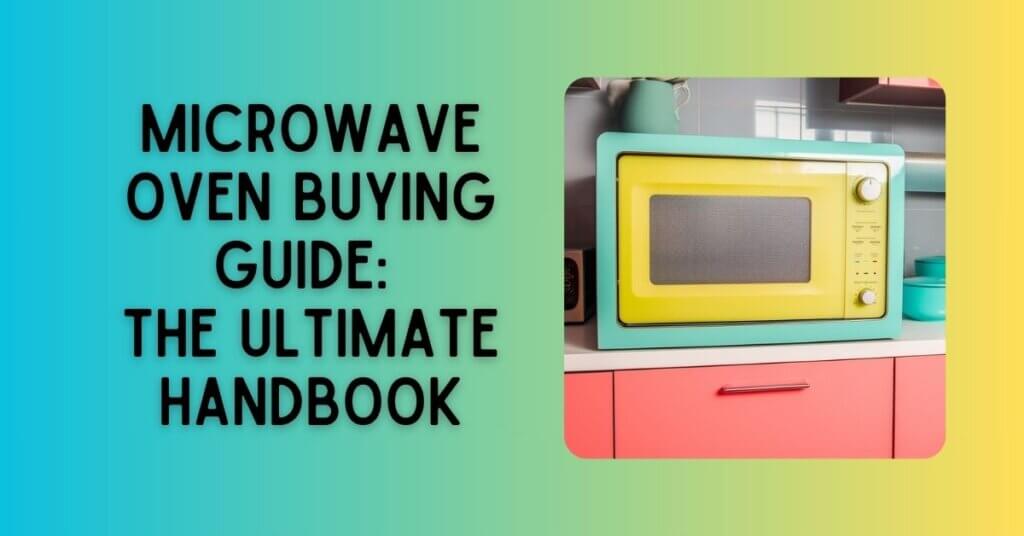
Overview
Microwave ovens have become essential in modern kitchens, revolutionizing how we cook and reheat food. Their convenience and efficiency make them a valuable addition to any household.
In this microwave oven buying guide, we will delve into the world of microwave ovens, exploring the different types, power and capacity considerations, cooking features and functions, design and aesthetics, installation and maintenance, safety and usage tips, and provide a helpful comparison and budgeting section.
By understanding the critical factors in selecting a microwave oven, you can make an informed decision that suits your needs and preferences.
Types of Microwave Ovens
Countertop Microwave Ovens

What are Countertop Microwave Ovens?
Countertop microwave ovens are versatile and convenient appliances on your kitchen counter, ready to be used anytime. These compact models are available in various sizes, allowing you to find the perfect fit for your space. Countertop microwaves offer user-friendly operation with features like preset cooking options, defrost functions, and quick-start buttons.
However, it’s essential to consider the power level and capacity that aligns with your cooking requirements. While countertop models are easily portable and don’t require any installation, they may occupy precious counter space in smaller kitchens.
Over-the-Range Microwave Ovens
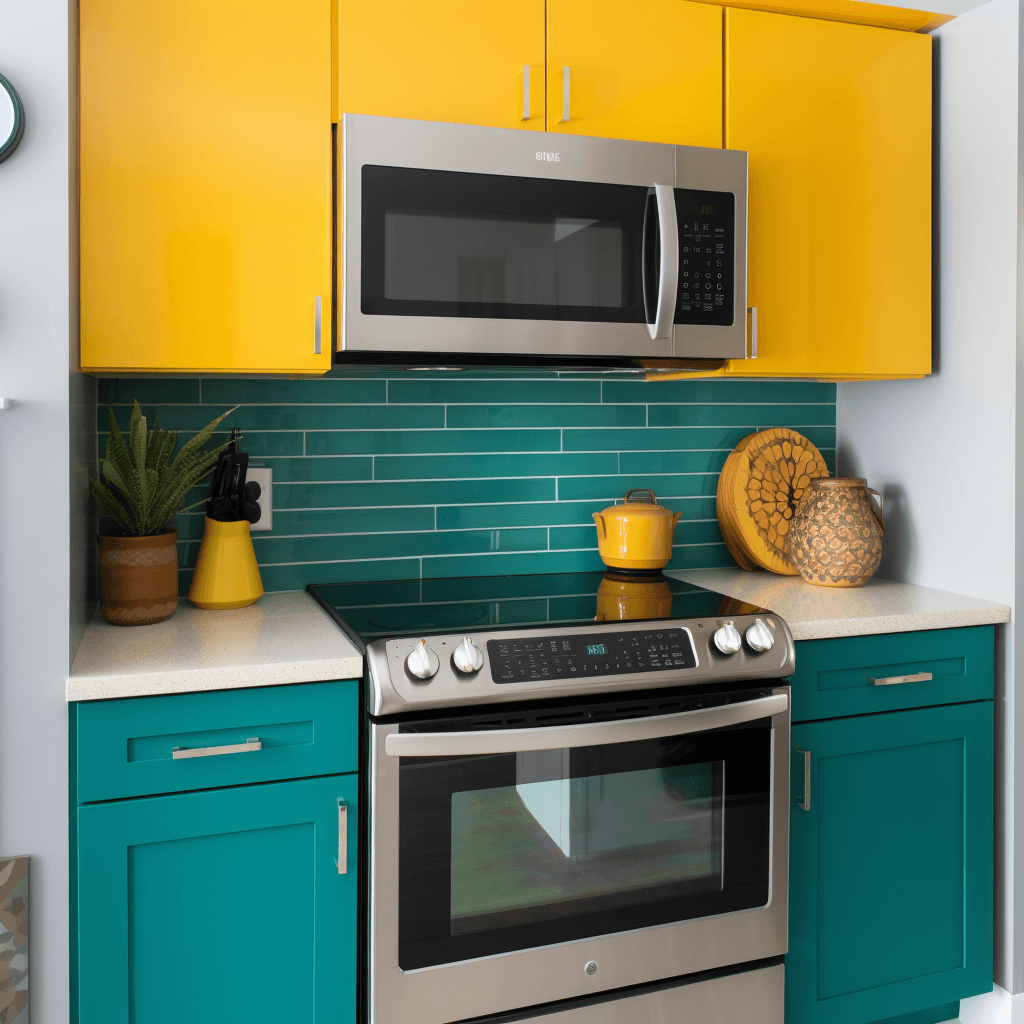
What are Over-the-Range Microwave Ovens?
Over-the-range microwave ovens seamlessly integrate into your kitchen design, mounted above your stove or cooktop. These models provide a space-saving solution, freeing up valuable countertop space. They often come equipped with exhaust fans and lights, combining multiple functions in one unit.
Before purchasing an over-the-range microwave, consider the dimensions and layout of your kitchen to ensure a proper fit.
Evaluating the power, capacity, and features that fit your cooking needs is also essential. While these models offer convenience and a streamlined aesthetic, they may require professional installation and limited flexibility in terms of relocation.
Built-in Microwave Ovens
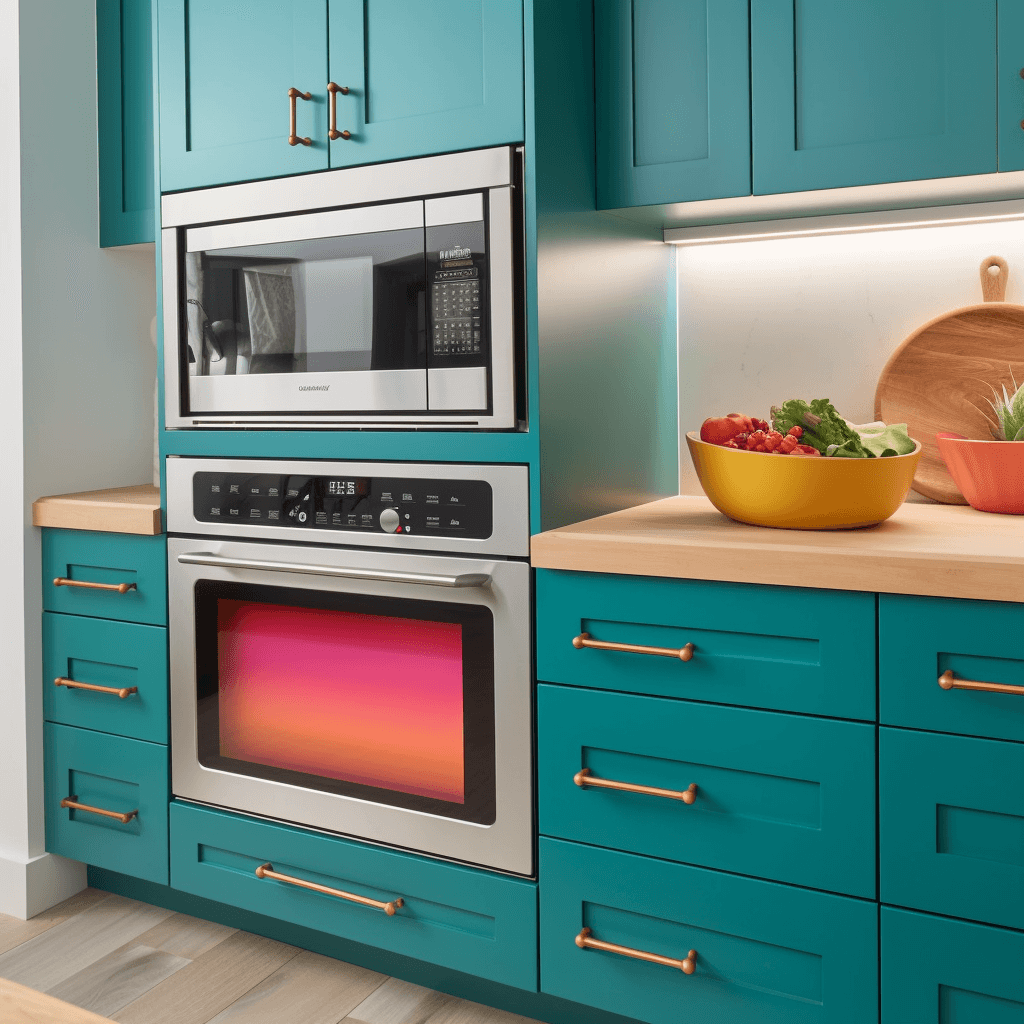
What are Built-in Microwave Ovens?
Built-in microwave ovens offer a sleek and integrated look, seamlessly blending into your cabinetry. These models are designed to maximize space optimization while providing the cooking power and features you desire.
When selecting a built-in microwave oven, consider available space, installation requirements, and the cooking capacity necessary for your household. These models are excellent for homeowners seeking a customized and visually appealing kitchen.
However, they require professional installation and may have limitations regarding future kitchen renovations.
Microwave Drawer
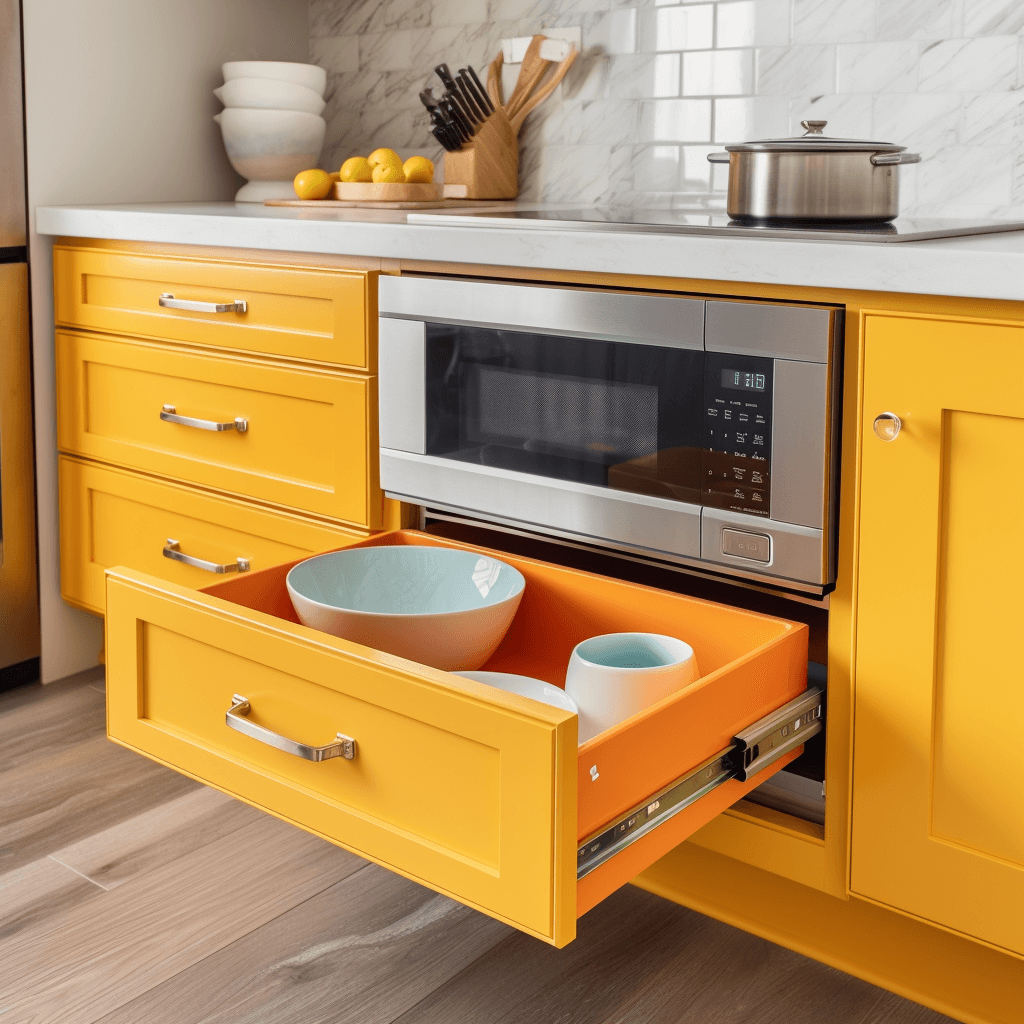
What are Microwave Drawers?
Microwave drawers are a unique and innovative option for those seeking enhanced accessibility and ease of use. These models are installed as a drawer beneath the kitchen counter, allowing convenient access and reducing the risk of spills or accidents.
With their ergonomic design and lift system, microwave drawers are an excellent choice for individuals with limited mobility. When selecting a microwave drawer, consider your kitchen layout and available space.
Additionally, evaluate the power and features that align with your cooking requirements. It’s important to note that microwave drawers often come at a higher price than other microwaves.
Power and Capacity Considerations
Wattage and Cooking Performance
The wattage of a microwave oven plays a crucial role in its cooking performance. Higher wattage models tend to cook food more quickly and evenly, making them ideal for individuals with busy lifestyles or those who frequently cook larger meals. On the other hand, lower-wattage microwaves may require longer cooking times.
Wattage Considerations
- 600-800 watts: Suitable for simple reheating and defrosting.
- 800-1,200 watts: Ideal for cooking and baking.
- 1,200 watts and above: Excellent for high-speed cooking and professional-level tasks.
They can be more suitable for primary heating and defrosting tasks. To determine the ideal power level for your cooking needs, consider the types of dishes you typically prepare and the time you can allocate for cooking.
Capacity and Size Considerations
A microwave oven’s capacity refers to the space available for cooking food. It is measured in cubic feet, and different microwave models offer varying degrees to accommodate different cooking needs. When choosing the right oven size, consider the number of people you regularly cook for and the dishes you prepare.
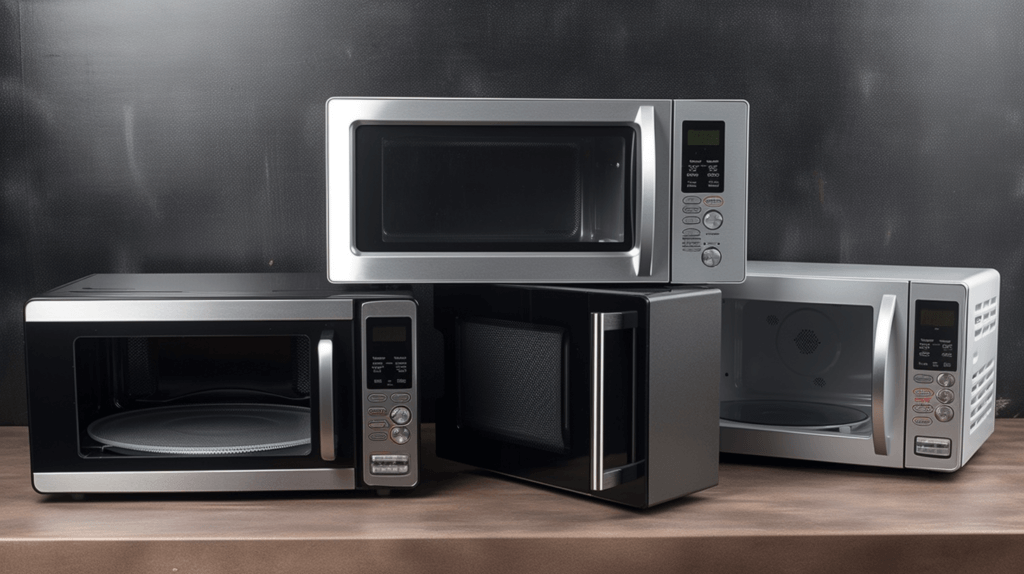
If you commonly cook for a large family or enjoy hosting dinner parties, a microwave with a larger capacity will be more suitable to accommodate larger cookware and volumes of food. However, be mindful of the available space in your kitchen and ensure that the microwave dimensions align with your counter or built-in space.
Capacity Considerations
- Small Families (2-3 members): Opt for a microwave with 15-20 litres capacity.
- Medium Families (4-5 members): Choose a microwave with a 21-30 litres capacity.
- Large Families (6 or more members): Look for a microwave with a capacity of 32 litres or above.
Cooking Features and Functions
Basic Microwave Functions
Basic microwave functions are the foundational cooking modes that most microwave ovens offer. These functions include defrosting, reheating, and popcorn settings.
Defrosting mode allows you to safely and efficiently thaw frozen food.
At the same time, the reheating function helps bring leftovers back to their desired temperature.
The popcorn setting is a convenient feature that ensures your popcorn pops perfectly without burning.
To use these essential functions effectively, follow the manufacturer’s instructions for optimal results and avoid overheating or under-cooking.
Convection Cooking
Convection microwave ovens provide added versatility by combining microwave technology with convection heating. This combination allows for faster and more even cooking results. Convection mode circulates hot air within the oven, producing a crispy exterior while retaining moisture within the food.

When selecting a convection microwave oven, it’s essential to understand the differences between convection, grill, and combination modes. Convection mode is ideal for baking, roasting, and browning, making it a valuable addition to any kitchen. From baking homemade bread to roasting a perfectly golden chicken, the options are limitless with convection cooking.
Sensor Cooking Technology
Sensor cooking technology simplifies cooking and prevents overcooking using precise temperature and humidity detection. With this feature, your microwave oven automatically adjusts the cooking time and power level based on the detected conditions. This allows for more consistent and accurate results. When choosing a microwave oven with advanced sensor technology, ensure it offers the desired cooking presets and the ability to customize settings to match your cooking preferences.
Multi-Stage Cooking
Multi-stage cooking allows you to program different stages and cook times to achieve specific recipes. This feature simplifies complex cooking processes, such as cooking a meal from start to finish. By programming each step, you can ensure that different components of your dish are cooked to perfection. For example, you can set the microwave to defrost the protein, then cook it, and finally, allow it to rest. This functionality is particularly beneficial for those who enjoy experimenting with multi-step recipes or prefer the convenience of a one-pot meal.
Design and Aesthetics
Exterior Design
Microwave ovens are available in a wide range of materials, finishes, and colours, allowing you to choose one that complements your kitchen aesthetics. Every style has a microwave oven design, from sleek stainless steel finishes to vibrant colours. When selecting the exterior design, consider the overall design theme of your kitchen and ensure that the microwave fits harmoniously with the existing appliances and décor. Additionally, consider the ease of cleaning and maintaining the exterior, as some finishes may require special care to keep them looking pristine.
Control Panel Design
Control panel design varies among microwave oven models, offering different layouts and features. Look for user-friendly interfaces and intuitive controls that are easy to navigate. Some microwaves feature touchscreens or digital displays, while others have traditional buttons. Consider your personal preferences and needs when selecting a control panel design. If simplicity and ease of use are essential, a microwave with straightforward controls and clear labelling will be beneficial.
Interior Design and Lighting
Evaluating a microwave oven’s interior design and lighting is crucial for optimal cooking visibility and convenience. Consider the internal capacity and layout, ensuring it can accommodate your cookware and dishes. Additionally, pay attention to the lighting within the oven, as a well-lit interior makes it easier to monitor the progress of your food. Some microwave ovens offer special interior coatings that facilitate easier cleaning, making maintenance a breeze.
Installation and Maintenance
Installation Requirements
When considering the installation of a microwave oven, it’s essential to understand the specific requirements for each type. Countertop microwave ovens require placement on a flat surface with access to an electrical outlet. On the other hand, over-the-range, built-in, and microwave drawer models may require professional installation to ensure proper integration into your kitchen.

Before installation, carefully read the manufacturer’s instructions and consider any electrical or ventilation requirements. It’s also crucial to determine whether you prefer a DIY installation or if professional assistance is necessary to guarantee a safe and reliable setup.
Cleaning and Maintenance Tips
Proper cleaning techniques are essential to maintain the longevity and performance of your microwave oven. Depending on the material and coating of the interior, specific cleaning instructions may vary. However, it is generally recommended to use mild detergents or specialized microwave cleaners to remove food debris and stains.

Regular maintenance routines, such as wiping down the interior and exterior, checking for any signs of wear, and ensuring proper ventilation, will help optimize microwave oven efficiency. In case of common issues or malfunctions, consult the manufacturer’s troubleshooting guide and only seek professional assistance when necessary.
Safety and Usage Tips
Child Safety Features
Microwave ovens with child safety features provide peace of mind for households with children. These features include child lock functions that prevent accidental operation or tampering with the microwave settings.
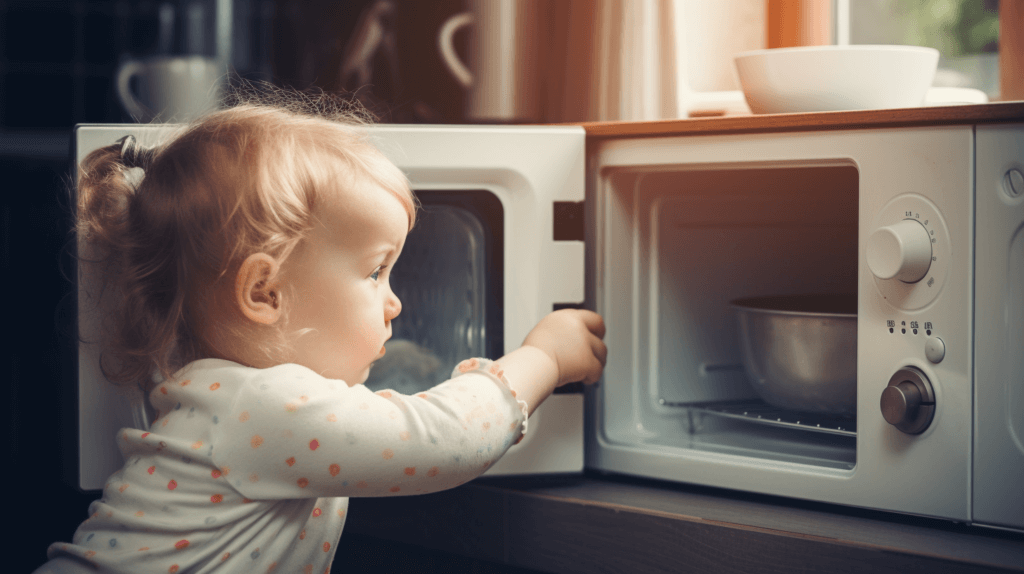
When selecting a microwave oven, prioritize models that offer reliable child safety features to ensure a safe cooking environment.
Safe Usage Practices
To avoid microwave mishaps and accidents, following safe usage practices is essential.
- Use microwave-safe containers and cookware specifically designed for microwave use.
- Avoid using metal utensils or aluminium foil inside the microwave, as they can cause sparks or fire hazards.
- If unsure about the safety of a specific material, refer to the manufacturer’s instructions or use microwave-safe alternatives.
Contrary to popular misconceptions, microwave ovens do not emit harmful radiation when used correctly, ensuring your safety and debunking any concerns.
Setting a Budget
Setting a budget for your microwave oven purchase is crucial to ensure you stay within your financial means. Determine your budget based on the features and performance expectations you desire. It’s critical to balance your budget and the desired performance. While higher-end microwave ovens may offer advanced features and sleek designs, they might only be necessary for some individuals’ cooking needs.

Additionally, explore financing options, such as instalment plans or payment programs, that may make higher-end microwaves more accessible.
Conclusion
In summary, selecting the right microwave oven is essential for enjoying efficient cooking and reheating experiences. Understanding the importance of choosing the right type, capacity, and features ensures that your microwave oven aligns with your cooking requirements.
Follow the Microwave Oven Buying Guide, when deciding, consider factors such as wattage, capacity, cooking functions, design, installation, maintenance, and safety features.
By finding the perfect balance between your budget and desired performance, you can acquire a high-quality microwave oven that enhances your overall cooking experience.
Please read other interesting posts too:
This blog site has interesting reviews and buying guides of other Kitchen Appliances like Coffee Machines, Wet Grinders, Electric Kettles, Mixer Grinders, Food Processors , Oven Toaster Grills, Dishwashers. You can always visit them for an interesting read.
FAQs
What wattage is ideal for general microwave cooking?
Wattage levels between 900-1000 watts are generally ideal for microwave cooking. However, higher-wattage models offer faster and more efficient cooking results.
Can I use metal utensils or aluminium foil in the microwave?
It is crucial to avoid using metal utensils or aluminium foil inside the microwave, as they can cause sparking, fire hazards, and damage to the oven. Instead, opt for microwave-safe containers and cookware.
How often should I clean my microwave oven?
Regular maintenance is essential to keep your microwave oven in optimal condition. Based on usage, it is recommended to clean the interior and exterior periodically to remove food debris and stains.
Are convection microwave ovens worth the investment?
Convection microwave ovens are worth the investment if you enjoy baking, roasting, and browning. They offer added versatility and faster cooking results compared to traditional microwave ovens.
How long do microwave ovens typically last?
On average, microwave ovens have a lifespan of about 10 years. However, the longevity of your microwave can depend on factors such as usage, maintenance, and the quality of the appliance.
Can a microwave oven replace a traditional oven for baking?
While microwave ovens offer baking capabilities through convection mode, they cannot fully replace traditional ovens. A conventional oven is recommended for more extensive baking tasks or larger volumes of food.



Be the first to comment